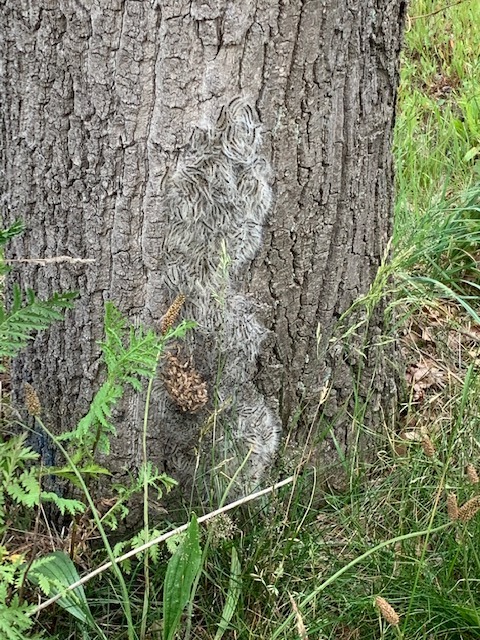Case Study: South Luffenham Parish Council
A small village in Rutland decided to convert the parameter of the Parish Recreational Ground to Carbon Offset tree planting. Using a mix of trees from instant impact ‘Medium’ sized Barcham trees to smaller ‘Starter Stock’ 2 year old Barcham trees that we have supplied in 5lt pots for ease of handling. The emphasis is that every tree planted will be a winner as they have invested in a Barcham root system to power establishment. With this in mind they have adopted a ‘less is more’ approach and have spaced their trees at between 7 and 10 metres apart. This negates the need for costly thinning out of stock later on down the line and produces robust stock that can develop as large specimen trees that maximizes potential for locking up carbon.
Another criteria is that a broad range of genus were planted to safeguard against future threats from pest and disease that are usually host specific. Trees with an expected long lifespan were also preferred as the benefits for Carbon Capture are extended for varieties that live for a minimum of 300 years.
The Parish also recognised the importance of protecting the newly created environment as there is no point to plant trees for subsequent generations if the land is going to be developed later on down the line. The Parish have written protection into their constitution and approached the Local Council Tree Officer to further protect by Tree Preservation Order.
To support this endeavour, a local grant was secured to convert an existing small brick building on the site to a water holding facility so the newly planted trees can be watered in the summer. A 1 cubic metre water tank is filled from rainfall collection from the roof via the guttering. An industrial water butt!
Their soil is free draining and to maximize success the following methods were employed to give the trees the very best of starts:
1. The top grass layer was shaved off using a garden spade to remove future competition from around the tree. Only a 5cm layer was removed as the top of the soil is generally the most nutritious and should be retained.

2. A good sized hole is excavated to de-compact the soil. 65cm in diameter to accommodate a 5 litre ‘Starter Stock’ tree, 100m diameter to accommodate a 35-65 litre ‘Medium’ tree. Loosen the soil to double fork depth throughout the hole.

3. Turn the soil within the hole to get a nice crumb structure. Tree roots need water and oxygen blended in measure in which to thrive.

4. Remove the 100% recyclable Barcham pot to reveal the root system. Barcham roots grow vertically down the confines of their container without spiralling so need no teasing out.

5. Use a saw to shave the base of the root system to get outward facing root to facilitate rapid establishment.

6. Only shave off 1cm from the base of the root system.

7. Get the planting depth right. Trees hate being planted too deep. The top of the compost should be at ground level, before the mulch is applied, after planting.

8. Use a 6 litre watering can with rose attachment to water in your newly planted tree. This firms up the soil particles around the root system without compacting the soil. Do not firm in by applying pressure onto the soil. This just undoes all the good work you have put in to de-compact the soil in the first place.

9. Fit a Barcham rabbit guard around the tree and then top off with 25 litres of mulch. The rabbit guard prevents the mulch from butting up to the stem of the tree and the mulch both protects the soil from drying out as well as suppressing weeds, especially grass, that would otherwise strongly complete with the newly planted tree in the first growing season after planting.

Even though it is very beneficial to do so, it may not be practical to water your trees in the subsequent summer. If ‘Starter Stock’ trees are installed in this way between October and the end of February you can often get away without subsequent watering but you may experience losses in years of intense heat and drought. It is a must however for ‘Medium’ trees to be routinely watered every two weeks from May through to September so only plant as many as you can maintain. In most cases they are established enough after the first growing season to be able to look after themselves thereafter.
If you plant following the guidelines above you can be sure of a successful scheme!
Barcham ‘Starter Stock’ is new to the market, previously used just for our own internal production to grow trees on in our fields to bigger sizes. The trees are of UK providence with seed often collected by us from preferred mature trees from around the UK. They are grown in a 5 litre Barcham Light Pot and are supplied with a second hand Barcham Rabbit Guard. Easy for children to handle to encourage community plantings, the trees are about 1.25-1.5m tall. They are £18.75 each (including VAT and rabbit guard) and available for planting from October through to February on request. The trees are also supplied with a fitted small bamboo cane which can be retained at planting. This supports the tree during establishment, negating the need to stake. Stock numbers are limited so we advise reserving in the summer for autumn planting.
If you are local enough to Barcham and only require small numbers, these trees are small enough to fit in a car to collect and save on delivery charges. Please refer to the sales team for advice on this. We can only accept collections for pre ordered trees as we need time and notice to collate orders from the nursery.
For more information please contact the sales team, [email protected]
View all Barcham trees
Bulk discount when you buy any mix of 10 trees or more





















 With a much needed government ban on Quercus (Oak) imports coming in a few weeks ago, UK home production of Oak will soon be sold out in larger sizes. Oak Processionary Moth is unfortunately in the UK and will spread alarmingly unless landowners are extremely vigilant to eradicate it as soon as it is detected. At least no more infected imports should come from Holland, Germany or Belgium where the pest has reached epidemic proportions.
With a much needed government ban on Quercus (Oak) imports coming in a few weeks ago, UK home production of Oak will soon be sold out in larger sizes. Oak Processionary Moth is unfortunately in the UK and will spread alarmingly unless landowners are extremely vigilant to eradicate it as soon as it is detected. At least no more infected imports should come from Holland, Germany or Belgium where the pest has reached epidemic proportions.




